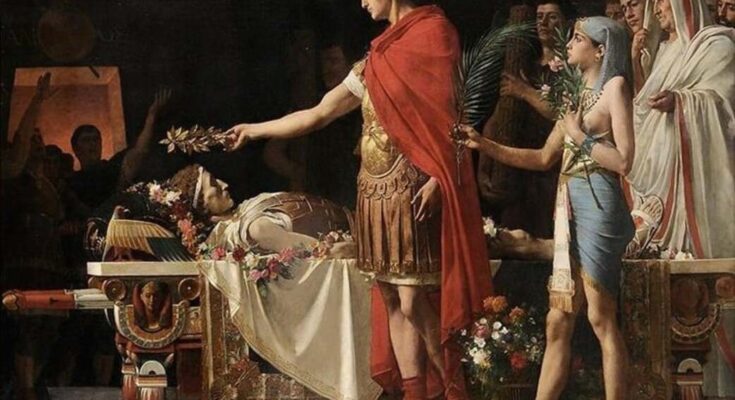The quest for Alexander the Great’s tomb has occupied researchers for centuries. However, another interesting issue surrounding the famous conqueror’s resting place is the question of what Alexander the Great’s tomb actually looked like. Fortunately, we have a variety of ancient texts which describe it.
What Alexander the Great’s original coffin looked like
In the year 323 BCE, Alexander the Great died in the city of Babylon in modern day Iraq. After this, his men immediately went to work constructing a coffin for him. As a mighty conqueror and emperor, they obviously felt that he deserved an impressive coffin.
Ancient tradition dictated that the planning and construction of the funerary cart, which was more than just the coffin itself, took two years. Alexander’s men constructed the coffin out of hammered gold. Diodorus Siculus, a Greek historian of the first century BCE, stated that the coffin was “fitted to the body.” This indicates it was not simply a large box in which the body was placed.
Across Alexander’s torso and perhaps even his legs with his arms resting on either side was a purple robe with gold embroidered on it. The funerary carriage itself was also said to have been covered with gold all over, even being referred to as a “gold vault” by Diodorus.
How the original tomb eventually changed
However, the tomb of Alexander the Great did not look like this forever. At first, Ptolemy I Soter had him buried in Memphis, Egypt. A few decades later, someone relocated his tomb to Alexandria. According to Suetonius, the one responsible for this was Ptolemy Philadelphus.
In any case, Alexander apparently kept his original gold coffin during his reburial in Alexandria. This situation continued for quite some time, as far as we know from the surviving records.
Finally, at about the turn of the first century BCE, Alexander the Great’s tomb completely changed. At least, this is what the records reveal. According to Strabo, writing in the first century CE, Ptolemy X plundered Alexander’s tomb. He took the gold coffin and melted it down for his own use.
The new look of Alexander the Great’s tomb
After this, the tomb of Alexander the Great looked completely different. Rather than being made of gold, Strabo says it was made of glass. Scholars debate what exactly Strabo meant by this. One suggestion is that he was referring to a type of rock crystal rather than actual glass.
Other scholars have suggested it could have been alabaster. This is a type of material that was commonly used for ornaments, such as vases. It is translucent enough that it was sometimes used instead of glass for very small windows. This is one justification for why Strabo may have been referring to it when he mentioned glass.
This stone was common in Egypt. The name ‘alabaster’ actually comes from Alabastron, a city in ancient Egypt. Therefore, there is a good chance that Strabo was referring to this when he said that Alexander the Great’s new tomb was made of glass.
According to Suetonius, Emperor Augustus visited the tomb to pay his respects to the ancient conqueror. He allegedly placed a gold crown on the sarcophagus. In this way, he somewhat restored the look of Alexander the Great’s tomb to its original golden glory.



